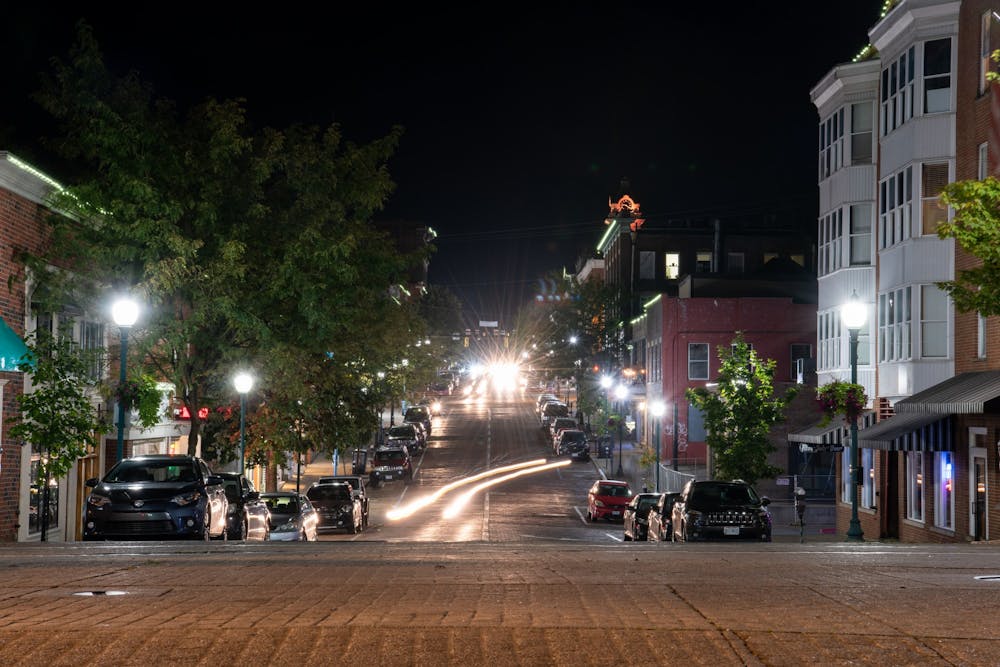Just over a week after hundreds of Ohio University students crowded onto Court Street to celebrate OU’s March Madness win, city officials are getting a better idea of the scope of the damage caused by the crowd.
Among the known damages is a car that was dented by students crawling onto it, a lamppost that was broken after students shook it back and forth and minor damages to trees after some were climbed by students celebrating the win.
Athens Mayor Steve Patterson said the city does not yet have an exact idea of the financial cost of the March 20 gathering, but was able to provide a rough estimate. Regarding damage to city-owned property, the lamppost could potentially cost thousands of dollars, and trees could cost around $300 if they need to be replaced, he said.
“It's not cheap. The damages that were done are certainly going to be expensive,” Patterson said. “I know that our investigators are looking into footage that they have received and we will certainly go through the legal process here in the city of Athens.”
There is not yet an idea of how much damage was caused to personal property. Patterson said he received an email from someone wanting to know how damage to personal property could have happened, but the person did not indicate taking legal action at this time.
Ralph Harvey, captain of the Athens Police Department, or APD, said the department is investigating videos taken by security cameras in the area and talking to witnesses of the event to try to identify those who are responsible for the damages. So far, APD has identified several individuals as possible suspects, including one student who was detained in connection with the broken lamppost.
Despite ongoing investigations, no one has been formally charged with a crime. However, students will almost definitely be charged if investigations find they are connected with the destruction of personal and public property, Harvey said. He also said no one should expect any immediate action from APD regarding the damages, especially because there is little possibility of future danger.
“(One) reason why sometimes these things take weeks, months on end is because we don't want to jump to a conclusion and charge somebody with a crime and then we find out later that we should have charged them with a different crime,” Harvey said. “For example, the light pole could be a misdemeanor, or it could be a felony, depending on different factors that we can establish, so we don't want to rush to charge somebody.”
The size of the crowd on March 20 has also raised concerns for a jump in COVID-19 infection numbers in Athens. Jack Pepper, administrator at the Athens City-County Health Department, said the health department is keeping a close eye on COVID-19 numbers following the event on Court Street.
Pepper acknowledged that due to vaccination efforts and previously infected students, there is a possibility that OU won’t see a rise in cases.
“I think that it's fair to assume that we are starting to get a lot of people vaccinated, so that helps, and I also think that it's fair to assume that many students on campus have had the disease, so that also helps. So, I think that there certainly is some reasonable deduction that could happen that would lead us to a place where perhaps we won't see an increase,” Pepper said. “I don't know that for certain, but it certainly is not an unreasonable theory to have.”
Now that everything has settled down and OU’s NCAA tournament run has come to an end, Patterson, while glad the city is starting to rebuild, is still wondering what motivated students to do such things.
“Don't destroy things. I mean, certainly, everyone is happy when your team does well and you're disappointed when they don't, and it's not every day that Ohio University goes to the big dance. But the flip to that is that it's not only incredibly irresponsible, it's also liable to sit and destroy city property,” Patterson said. “Why would you do that?”






